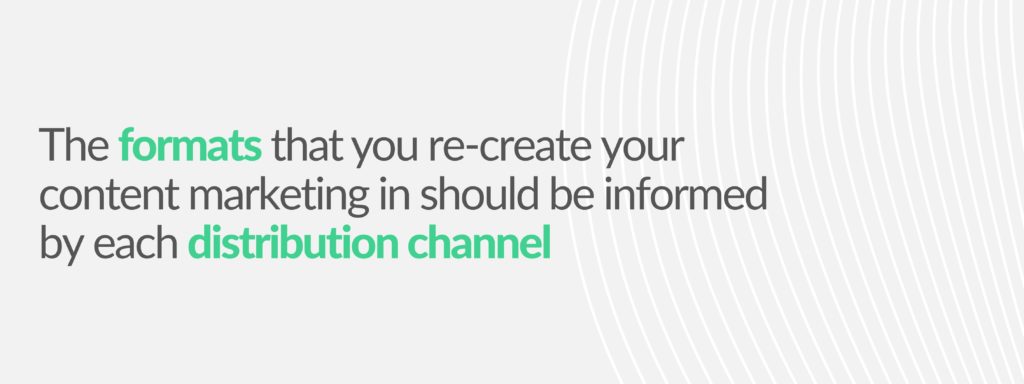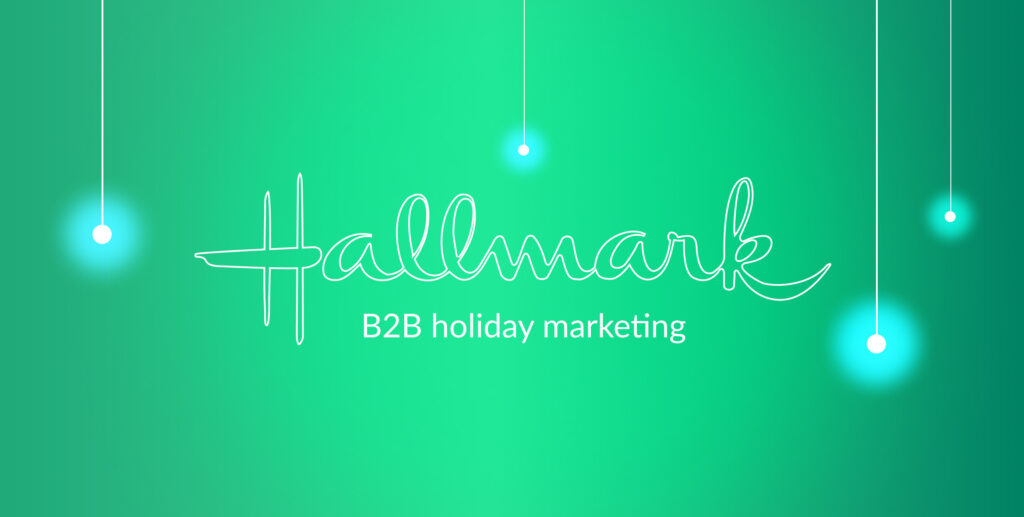When it comes to tech B2B marketing content, figuring out what tech decision-makers want to hear about is the most important step. That being said, even the most relevant, data-driven and targeted content won’t get you anywhere if your target audience is not seeing it. So, how do you put your content in front of your B2B decision makers in a way they want to consume it?

Here are our five top tips that you can start using today to promote your tech B2B content:
Diversify, diversify, diversify
You have finalised your nice and shiny B2B content piece, now what? A great way to get the most value out of it is to diversify your original work into new assets: turn blog articles into social posts, videos into podcasts, press releases into infographics, testimonials into banners and so on – the combinations are almost endless.
What formats should you repurpose content into? Start with the channel you want to populate, and then tailor your content to fit. A multichannel approach that combines paid and organic activity tends to work best. For instance, to promote a survey report, you could create a banner and a blog post on your website encouraging people to download it. Using the survey’s key findings, you could also create a LinkedIn campaign with sponsored posts to drive traffic to your site, as well as an email nurture campaign. Combine this with SEO and maybe even a teaser video, and you’ve expanded your content’s reach multifold.

The more personal, the better
Personalised content works better than generic for tech B2B, and it’s true for all channels e.g. emails with personalised subject lines are 26% more likely to be opened. So, use your analytics tools to see what content and format works for your target personas. As a rule, personalise whenever you have the option to – always ensuring you have the right data (after all, it is better to send a generic message than to get someone’s name or job title wrong).
By making your content personal (bonus points if it appeals to human emotions too), you’re also increasing its authenticity. That is why user-generated content (UGC) is 42% more effective than branded content – people want to hear about other people, their problems and needs. So, don’t stop at UGC, aim for user-promoted content too. Having your own customers promote your content to their peers is one the most effective forms of advertising. And don’t forget about your employees, they could also be powerful ambassadors – ensure they share and engage with your content, too.
Lastly, take personalisation to the next level by promoting specific, relevant content at different stages of your customer journey. An often-overlooked format is the humble website popup. When done right (based on behavioural data), they are a great way of promoting your content. Websites like poptin let you manage popups in line with a user’s activity on your site, e.g. If someone has visited your 5G page and read your latest 5G blog, they’ll get a popup to download a 5G whitepaper.
Make it easy to find
Think about facilitating a content journey for your users on your website so they can learn as much as they need about your offering or area of expertise.
To do this most effectively, it can be helpful to establish a content hub, a repository for all content, especially as you start to diversify your content further. For most companies, it makes sense to use the website to host the content hub – after all, that’s where you want your audience to go. And once they’re there, you have an opportunity to convert them, so make sure you’re linking relevant products, including appropriate CTAs and so on. Essentially, make it as easy as possible for them to learn more, or make a purchase.
Creating a monthly or quarterly newsletter is also a good way to share your latest content with your audience.
Make the most of social media
You already know social media is the best channel to amplify your messages. However, if you’re not picking the right channels and format, your post might just become another drop in the ocean of online content. Adapt the format to the channel – LinkedIn and Facebook audiences are different, so the way you present your content should be too.
Remember that LinkedIn is the star of tech B2B social media, so be active, build an audience and join groups. It’s best practice to establish your presence and add value to your contacts before you start promoting content, to avoid coming across as spammy.
Collaboration over competition
Nothing great is ever accomplished alone, so establish partnerships with influencers or social ambassadors to increase your reach. You can also contact companies with similar audiences for the co-creation and co-promotion of content. This means if you and another tech B2B business each produce three pieces of content a month, you could double the value you bring to your respective audiences by partnering together and offering six pieces each month – that’s time and money saved!

In conclusion
Figure out how, when and who to promote your content to: diversify it onto multiple formats and channels, promoting it in the most personal way you can (considering messaging, customer journeys and word of mouth). Finally, use social media wisely and don’t forget to team up with other companies in the industry with similar audiences and topics of interest.
If you think outsourcing your tech B2B marketing is the best move for you, drop us a line at hello@isolinecomms.com, and we’ll be happy to help you not only create unique content, but also a promotional strategy.



